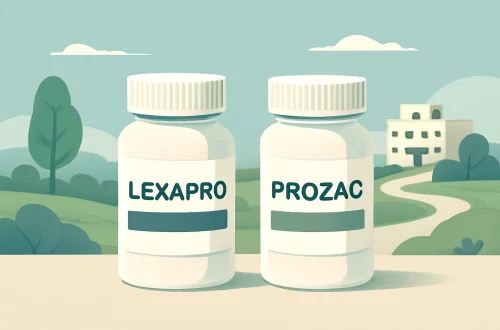
Essential Dog Files for Nail Care and Grooming Tips
Nail care is an essential aspect of dog grooming that often goes overlooked by many pet owners. Just like humans, dogs require proper nail maintenance to ensure their overall health and well-being. Long nails can lead to a variety of problems, including discomfort while walking, potential injuries, and even joint issues over time. In addition to the physical implications, regular nail trimming can also contribute to your dog’s hygiene and comfort.
Understanding the significance of nail care is crucial for any responsible dog owner. Not only does it prevent pain and injury, but it also fosters a trusting relationship between you and your furry friend. Many dogs may be anxious or fearful about having their nails trimmed, making it essential for owners to approach the task with patience and care. Establishing a regular grooming routine can help your dog feel more comfortable and relaxed during nail care sessions.
In this article, we will delve into various aspects of nail care and grooming tips for dogs, helping you to create an effective and enjoyable experience for both you and your pet. From understanding the tools needed to mastering the techniques, we will cover everything you need to know to keep your dog’s nails in optimal condition.
Understanding the Importance of Regular Nail Trimming
Regular nail trimming is not just about aesthetics; it plays a vital role in your dog’s overall health. Overgrown nails can cause a multitude of issues, including pain, discomfort, and even injury. When a dog walks on hard surfaces with long nails, it can lead to unnatural pressure on their paws and joints, potentially causing arthritis or other long-term problems.
Moreover, long nails can get caught in carpets, furniture, or other objects, leading to painful tears or breaks. This not only causes immediate discomfort but can also lead to infections if the nail bed is injured. Regular trimming can prevent these incidents, ensuring that your dog remains active and pain-free.
Another significant reason for maintaining nail health is hygiene. Long nails can harbor dirt and bacteria, increasing the risk of infections. Keeping your dog’s nails trimmed can help minimize this risk and promote better overall health. Additionally, regular nail care is part of a comprehensive grooming routine that can enhance your dog’s appearance and comfort.
Establishing a regular schedule for nail trimming is key. Depending on your dog’s breed and activity level, you may need to trim their nails every few weeks. Breeds that are more active may naturally wear down their nails, while others may require more frequent attention. Paying attention to your dog’s nail growth and adjusting your grooming routine accordingly can help keep their nails in check.
Essential Tools for Nail Care
When it comes to nail trimming, having the right tools makes all the difference. Various tools are available, each designed to fit different preferences and nail types. Understanding these tools can help you choose the best ones for your dog’s needs.
One of the most common tools is the nail clipper. There are different types available, including guillotine-style and scissor-style clippers. Guillotine clippers work by sliding the nail through a small opening and then squeezing the handle to cut. They are often preferred for their precision. On the other hand, scissor-style clippers resemble regular scissors and can be easier to use for larger dogs.
Another essential tool is the nail grinder, which uses a rotating abrasive surface to gently file down the nail. Grinders can be particularly useful for dogs that are anxious about clippers, as they often make less noise and can provide a smoother finish on the nails. However, they do require a certain level of skill and patience to use effectively.
In addition to clippers and grinders, having a good quality nail file is important for finishing touches. After clipping or grinding, a nail file can help smooth any rough edges, preventing snagging and discomfort. It’s also a good idea to keep styptic powder on hand in case of any accidental nail injuries. Styptic powder can help stop bleeding and promote healing.
Lastly, consider investing in non-slip mats or surfaces for your grooming area. These can help your dog feel more secure during the process, reducing anxiety and movement. Choosing the right tools and creating a comfortable environment can significantly improve the nail grooming experience for both you and your dog.
Techniques for Stress-Free Nail Trimming
Trimming your dog’s nails can be a daunting task, especially if your pet is anxious or uncooperative. However, there are several techniques you can employ to make the process smoother and more enjoyable for both of you.
First and foremost, it’s important to create a calming environment. Choose a quiet space free from distractions, and consider using soothing music or treats to create a positive atmosphere. Allow your dog to become familiar with the grooming space before starting the trimming process.
Start by getting your dog accustomed to having their paws handled. Gently hold and massage their paws during playtime or while relaxing. This can help desensitize them to touch and make them more comfortable when it comes time for trimming.
When you’re ready to trim, take it slow. Begin with just one or two nails at a time, rewarding your dog with treats and praise after each successful trim. If your dog shows signs of anxiety, take a break and try again later. It’s crucial not to rush the process, as this can increase fear and resistance.
Additionally, consider using positive reinforcement techniques. Reward your dog with treats, praise, or their favorite toy after each nail is trimmed. This helps create a positive association with the grooming process, encouraging them to remain calm and cooperative in the future.
Lastly, if you’re feeling unsure about trimming your dog’s nails, consider seeking help from a professional groomer or veterinarian. They can provide guidance and demonstrate proper techniques, ensuring that you feel confident in your nail care routine.
Signs Your Dog Needs Nail Care
Recognizing when your dog needs nail care is essential for their well-being. There are several signs that indicate it’s time for a trim. One of the most obvious signs is the sound of clicking or tapping as your dog walks on hard surfaces. This noise often suggests that the nails have grown too long and need attention.
Another key indicator is the appearance of your dog’s nails. If you notice that the nails are curling or touching the ground when your dog is standing, it’s time for a trim. Additionally, if you see any splits, cracks, or discoloration, these could be signs of injury or infection, necessitating immediate attention.
Pay attention to your dog’s behavior as well. If they seem to be favoring one paw or showing reluctance to walk or play, it may be due to discomfort from long nails. Additionally, if your dog is constantly licking their paws, this could be an indication of irritation caused by overgrown nails.
Regularly assessing your dog’s nails can help you stay on top of their grooming needs. Establishing a routine check every few weeks can help you catch any potential issues before they become serious problems. By staying proactive about nail care, you can ensure your dog remains healthy and comfortable.
In conclusion, proper nail care is vital for your dog’s overall health and happiness. By understanding the importance of regular trimming, utilizing the right tools, employing effective techniques, and recognizing the signs that indicate your dog needs nail care, you can create a positive grooming experience. Remember, if you have any concerns about your dog’s nails or overall health, consult with a veterinarian for professional advice. This article is not intended as medical advice; always seek the guidance of a qualified professional for health-related issues.




